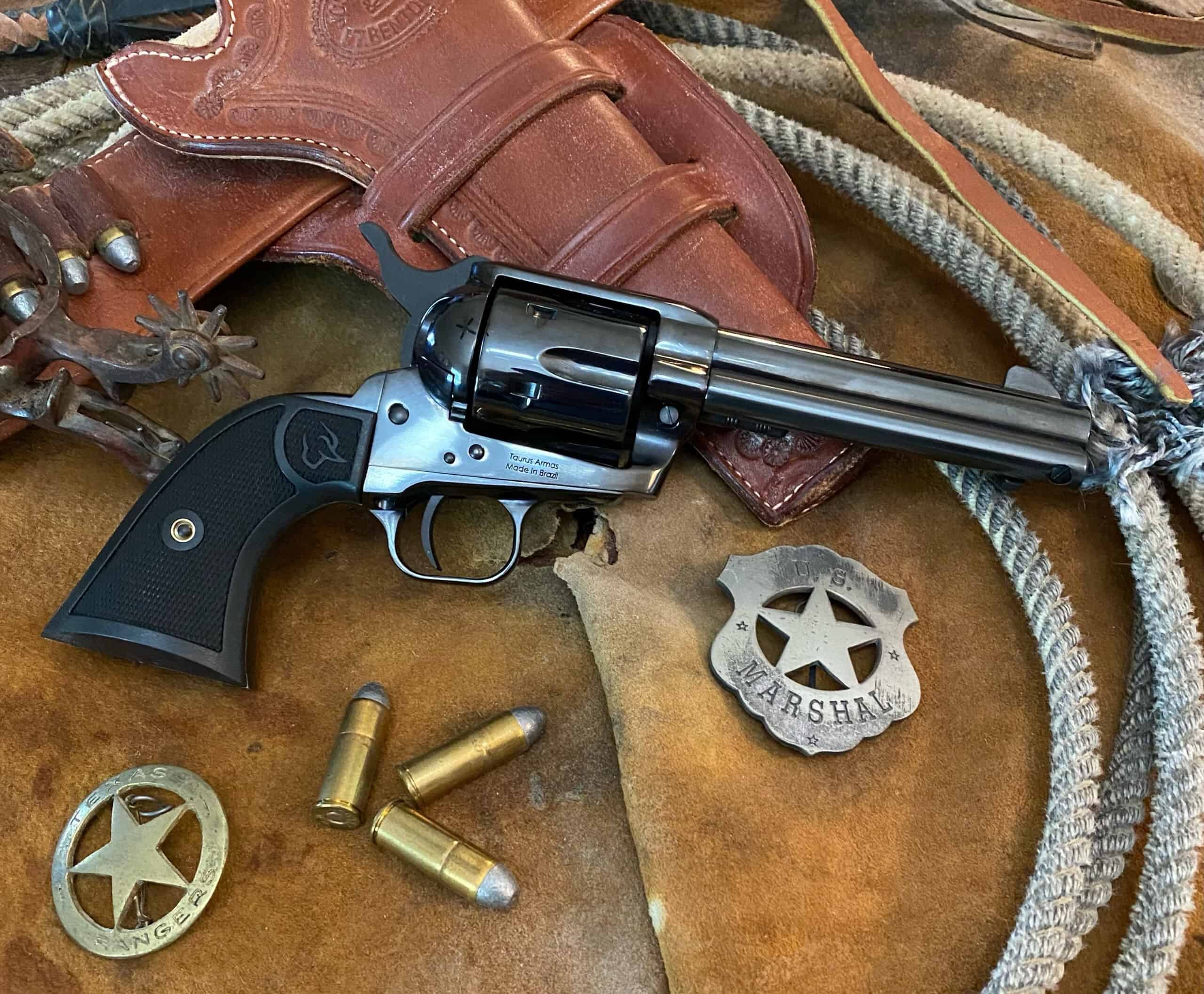Summer Reads
Gun books you shouldn’t miss
“Buy a gun—buy a book.” It’s an old adage, but nothing can enrich your enjoyment of firearms more than good reference books. Never in the history of gun collecting has there been so many excellent references available, documenting the most obscure to the most common of firearms.
Another notable development in firearms literature is the international, cross-fertilization and collaboration among serious collectors. Specialized collectors who formerly never knew or communicated with other specialized collectors are increasingly in contact with one another and sharing, for the first time, information about their own collections and collected knowledge. The result has been authoritative reference works cooperatively authored by two or more collectors. Two books being reviewed here, the History of Modern U.S. Military Small Arms Ammunition and the Karabiner 98k, clearly reflect this trend.
The History of Modern U.S. Military Small Arms Ammunition is an exhaustive and thoroughly enjoyable study of small arms ammunition developments in the United States. It’s now a 3-volume work. Volume I covers the period 1880-1939, Volume II, 1940-1945, and Volume III, just released, 1946-1977.
With a little (but not all!) tongue-in-cheek, the authors dedicated their first volume published in 1967 to “Our Wives—In hopes they will give us time for Volume II,” Volume II, published in 1978, to “Our Ex-Wives—Who did give us time for Volume II.” Volume I revised in 1998, “To Our New Wives—In hopes they will give us time for Volume III” and Volume III, “To co-author and gifted illustrator, Eugene Scranton, whose passing before the release of Volume III is unfortunate.”
But that’s the tone of the text. No dry, academic drivel, here. Just volumes of intriguing facts about every path, successful and unsuccessful, mundane and exotic, taken in the design and development of military small arms ammunition in the United States.
The access the authors had to official files, data and samples is simply remarkable, but they worked for it. I remember speaking with one of the authors, Bill Woodin, at the time the Soviet Union was becoming unwound. Woodin, who founded the Woodin Laboratory for ammunition research in Tucson, Az., was packing his bags to fly into Eastern Europe ASAP, where he hoped to have access to information and samples of ammunition shuttered-off behind the Iron Curtain for 50 years. That’s the degree of dedication the authors bring to this work.
What sets this 3-volume study apart from others is not only its authoritative text but the hundreds of X-ray type illustrations drawn to exact scale by co-author, Eugene Scranton. Scranton’s meticulously accurate illustrations take you inside cartridges and projectiles to show you how and why they were designed and made. The illustrations are worth the price of the books alone. They breathe life into the textual descriptions of the ammunition forms.
My well-worn, dog-eared copies have always yielded answers to my questions. For example, I once wanted to know what the load was for the .30-40 Krag gallery cartridge. There it was on page 88 of Vol. I: 5 grains of black powder and a 42-grain lead roundball. Another time, I was curious about the design and loading of rifle grenade-launching cartridges. There wasn’t just one cartridge described but four pages of cartridges described and illustrated along with pictures of their cartridge box labels.
Volume III, covering developments between 1946 and 1977, is a massive work of 650 pages and 1,077 illustrations. It covers some of the most exotic cartridge types ever conceived, including SPIW, SAW, FABRL, SALVO, SCAMP, Tombstone, Squeeze Bore, Taper Bore, Flechette, Simplex, Duplex, Triplex, Multiplex, Folded, Tround, Caseless, Expellable, QSPR, Rocket Propelled, Underwater and, my favorite, the Alpha series silent cartridges that propelled a bullet via a captive piston system.
This 3-volume work belongs within reach on your bookshelf.
Mauser K98k
If you’ve ever owned a Mauser Model 98k or wondered about its many variations, uses and accessories, you’ll value the next book highly, Karabiner 98k Volume I by Bruce Karem and Michael Stevens, with archival assistance from Jon Speed and Hans Lockhoven.
There have been many books written about the K98k service rifle, but none come close to this new work in terms of data, original documents, period photographs and lavish colored pictures of the arms and components themselves. Again, Karabiner 98K is the product of a whole new level of international collaboration among serious collectors and firearm historians.
Karabiner 98k traces the evolution of the K98k from the Gew98 and Kar98a models of WWI through the development and international sales of Mauser’s “Standard-Modell” and “Banner K” models, which bridged the Gew98 and the emergence of the true K98k at Mauser Oberndorf in late 1934.
What most collectors will find so valuable about this book are the extensive data, pictures, codes and markings associated with K98k production at factories other than Mauser Oberndorf and Mauser Berlin-Borsigwalde including J.P. Sauer & Sohn, Erma-Werke, Berlin-Lübecker Maschinenfabrik (BLM), Berlin-Suhler Waffen- und Fahrzeugwerke (BSW) as well as SS conversions of the Gew98 and Kar98a for their own use.
Equally important to the records of Germany’s adoption of the K98k is the authors’ detailed documentation of the extensive export trade carried out with K98k and Standard-Modell models to countries like China, Portugal, Japan and Finland.
The final chapter of the Karabiner 98k is an extensive look at all of the accessories associated with the model, from bayonets to training sights.
After covering the text and sensational photography, which supports it, you will never again be stumped by a K98k at a gun show. Given the parties involved, Karabiner 98k will probably be the definitive work on Germany’s K98k
THE GREAT ’98
Rarely do we have the opportunity to share an insider’s view of a major arms manufacturer during wartime, and that’s what makes Ott-Helmuth von Lossnitzer’s, Technical Director of the Mauser Company 1933-1945, An Oral Recollection such a remarkable book.
At the conclusion of WWII, Otto von Lossnitzer, like Wernher von Braun, proved to be such an asset he was recruited by the US Ordnance Corps and the Springfield Armory to develop new weapons systems for the US Air Force, resulting in the development of the 20mm M39 cannon, the 30mm revolver gun and the 20mm M61 Vulcan Gatling gun. His work was so outstanding he was appointed Supervisor of the department tasked with the development of all small arms up to 40mm. He later served with the US Army Material Command and was responsible for the armament and fire control systems of the Cheyenne AH-56A helicopter, ending his career at the AMRON Corp. in Waukesha, Wisconsin.
While at AMRON, he met Leslie E. Field, editor of this book, who encouraged Von Lossnitzer, at an advanced age, to dictate his memoirs to the girls enrolled in the advanced typing class at the Waukesha High School. The result is a remarkable memoir and an intimate look at Mauser during the most critical, yet exciting, period of its history.
One story, related to the preceding K98k study, occurred when Germany’s Ministry for Armament and Ammunition Production came to Mauser to negotiate for the patent and production rights to the K98k so it could be manufactured by additional firms. Much to his own surprise, Von Lossnitzer hammered out a deal which returned 12 million Reichsmarks to Mauser over the life of the agreement.
In a book review, it’s impossible to even scratch the surface of the fascinating weapons developments Von Lossnitzer discusses in his memoir, which range from temperature regulating progressive rifling forms to tapered bore guns to the development of the MG213 aircraft revolving cannon and the roller-locking Sturmgewehr. Possibly Von Lossnitzer’s greatest contribution was his introduction of higher mathematics, high-speed cameras and sophisticated instrumentation to armament design, testing and production at Mauser.
The side stories in the book really add spice to the work. When Germany absorbed Austria as an ally, Von Lossnitzer was sent to the Steyr factory to see if it would be an ideal site for aircraft armament production. He observes, “Going at that time through the big plant was like stepping back 50 or 60 years. All the big sheds with machine tools had no concrete floors. The machines stood on bare earth… The factory still made the old Mannlicher rifles and the Schwarzlose machine guns. Both were weapons which I had as historic items in the German Ordnance Weapons Museum!” Needless to say, Von Lossnitzer gave Steyr a thumbs-down.
Von Lossnitzer’s memoir is chocked full of invaluable information and pictures of German weapons design. It’s a truly unique book to be savored chapter by chapter.
History of Modern U.S. Military Small Arms Ammunition,Volume III: 1946-1977 by Frank W. Hackley, William H. Woodin and Eugene L. Scranton, edited by Mel Carpenter, hardcover, 650 pages, ©2015, $65 + shipping, MRC3, P.O. Box 665, Orange Park, FL 32067,
www.historyofammunition.com
Karabiner 98k. Volume I: A collector’s guide to the development and production of the German K98k service rifle up to 1938 by Bruce Karem and Michael Stevens with archival assistance from Jon Speed and Hans Lockhoven, hardcover, 588 pages, ©2012, $125. From Third Party Press, P.O. Box 101, Angleton, TX 77516, www.thirdpartypress.com
Ott-Helmuth von Lossnitzer. Technical Director of the Mauser Company 1933-1945. An Oral Recollection by Ott-Helmuth von Lossnitzer, edited by Leslie E. Field and Bas J. Martens, hardcover, 380 pages, ©2011, $49.99, Mowbray, Inc., 54 E. School Street, Woonsocket, RI 02895, (800) 999-4697, www.gunandswordcollector.com





